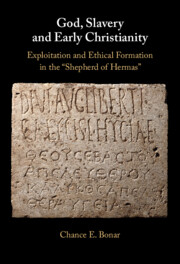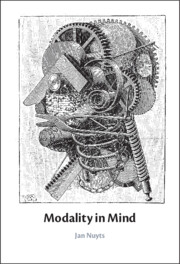Refine search
Actions for selected content:
177 results
An Emil Kraepelin centenary: psychiatry’s long 20th century, 1899–2026 and after
-
- Journal:
- The British Journal of Psychiatry , FirstView
- Published online by Cambridge University Press:
- 11 December 2025, pp. 1-3
-
- Article
-
- You have access
- HTML
- Export citation
Constitutional subjects: the formation and fracture of constitutional legitimacy. Towards a phenomenology of law and violence
-
- Journal:
- European Law Open ,
- Published online by Cambridge University Press:
- 10 November 2025, pp. 1-25
-
- Article
-
- You have access
- Open access
- HTML
- Export citation
Veiling in rural Bangladesh: women’s rights consciousness, choice, and subjectivity
-
- Journal:
- Politics and Religion , First View
- Published online by Cambridge University Press:
- 24 October 2025, pp. 1-19
-
- Article
-
- You have access
- Open access
- HTML
- Export citation
Chapter 2 - Varieties of Philosophical Humanism and Conceptions of Science
- from Part I - Interrelations
-
-
- Book:
- Science and Humanism
- Published online:
- 09 October 2025
- Print publication:
- 23 October 2025, pp 36-59
-
- Chapter
-
- You have access
- Open access
- HTML
- Export citation
Introduction
-
- Book:
- God, Slavery, and Early Christianity
- Published online:
- 19 September 2025
- Print publication:
- 09 October 2025, pp 1-47
-
- Chapter
- Export citation
Conclusion
-
- Book:
- God, Slavery, and Early Christianity
- Published online:
- 19 September 2025
- Print publication:
- 09 October 2025, pp 257-270
-
- Chapter
- Export citation
8 - Modern and Postmodern Receptions
- from Part II - The Christological Reception
-
-
- Book:
- The Cambridge Companion to Christology
- Published online:
- 15 September 2025
- Print publication:
- 02 October 2025, pp 127-144
-
- Chapter
- Export citation
4 - Phenomenological Foundations
- from Part I - Theoretical Foundations
-
-
- Book:
- The Cambridge Handbook of Psychological Anthropology
- Published online:
- 22 October 2025
- Print publication:
- 25 September 2025, pp 90-113
-
- Chapter
- Export citation

God, Slavery, and Early Christianity
- Divine Possession and Ethics in the Shepherd of Hermas
-
- Published online:
- 19 September 2025
- Print publication:
- 09 October 2025
Summoning the digital investor: Fintech apps and the shaping of everyday financial subjectivities
-
- Journal:
- Finance and Society ,
- Published online by Cambridge University Press:
- 22 August 2025, pp. 1-19
-
- Article
-
- You have access
- Open access
- HTML
- Export citation
Preface
-
- Book:
- The Cambridge Introduction to Jacques Lacan
- Published online:
- 17 July 2025
- Print publication:
- 31 July 2025, pp ix-xiv
-
- Chapter
- Export citation
Chapter 1 - Context
-
- Book:
- The Cambridge Introduction to Jacques Lacan
- Published online:
- 17 July 2025
- Print publication:
- 31 July 2025, pp 1-20
-
- Chapter
- Export citation
3 - Political Tensions and the Democratic Press
- from Part II - Democracy and the Press Function
-
-
- Book:
- The Future of Press Freedom
- Published online:
- 25 July 2025
- Print publication:
- 24 July 2025, pp 28-37
-
- Chapter
-
- You have access
- Open access
- HTML
- Export citation
Chapter 1 - The Place of Meaning
- from Part I - The Beginnings of Meaning
-
- Book:
- The Development and Organization of Meaning
- Published online:
- 11 June 2025
- Print publication:
- 26 June 2025, pp 3-11
-
- Chapter
- Export citation
Voice and Agency: A Round Table: Introduction
-
- Journal:
- Royal Musical Association Research Chronicle ,
- Published online by Cambridge University Press:
- 28 May 2025, pp. 1-7
-
- Article
-
- You have access
- Open access
- HTML
- Export citation
“I Respect the Rules of my Home Country”: Performing Čisti Hrvatski and Exemplary Minority Subjectivity
-
- Journal:
- Nationalities Papers , FirstView
- Published online by Cambridge University Press:
- 23 May 2025, pp. 1-16
-
- Article
-
- You have access
- Open access
- HTML
- Export citation
2 - Bottoming for Wagner: Listening, Analysis and (Gay-Male) Subjectivity
- from Part I - Orientations
-
-
- Book:
- Wagner Studies
- Published online:
- 17 April 2025
- Print publication:
- 24 April 2025, pp 28-48
-
- Chapter
- Export citation
6 - (Inter)subjectivity, and More
-
- Book:
- Modality in Mind
- Published online:
- 25 March 2025
- Print publication:
- 27 March 2025, pp 195-232
-
- Chapter
- Export citation

Modality in Mind
-
- Published online:
- 25 March 2025
- Print publication:
- 27 March 2025
Chapter 39 - “I Wish I Could Be Like a Tree”
-
-
- Book:
- Pillars of Developmental Psychology
- Published online:
- 14 February 2025
- Print publication:
- 20 February 2025, pp 445-457
-
- Chapter
- Export citation
